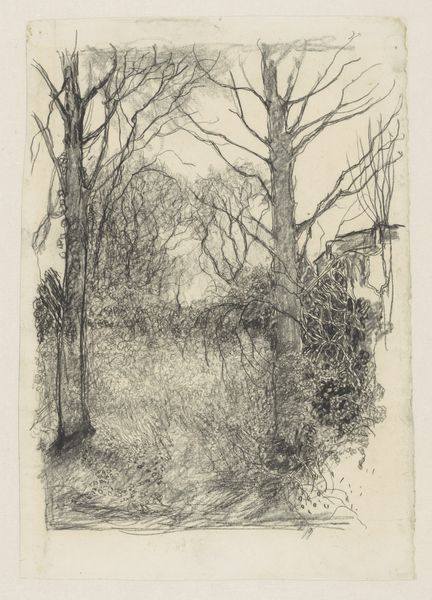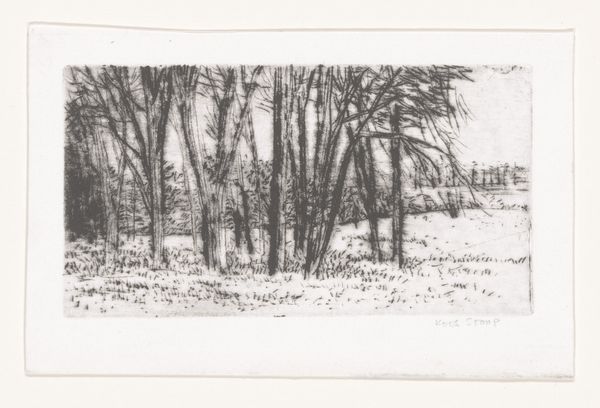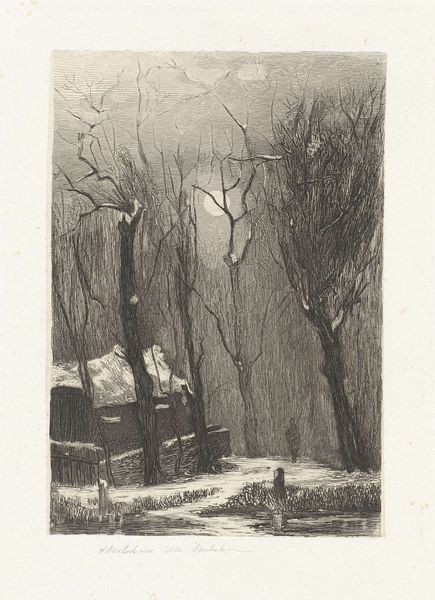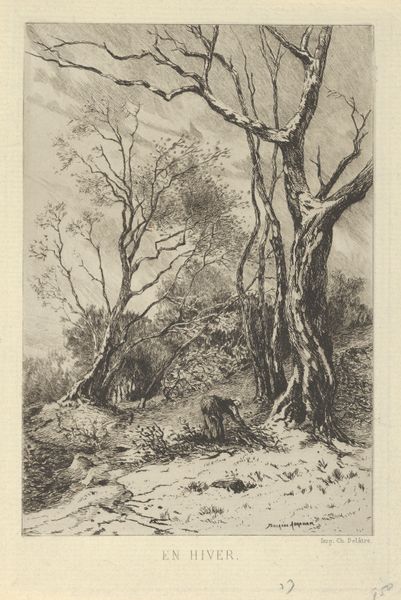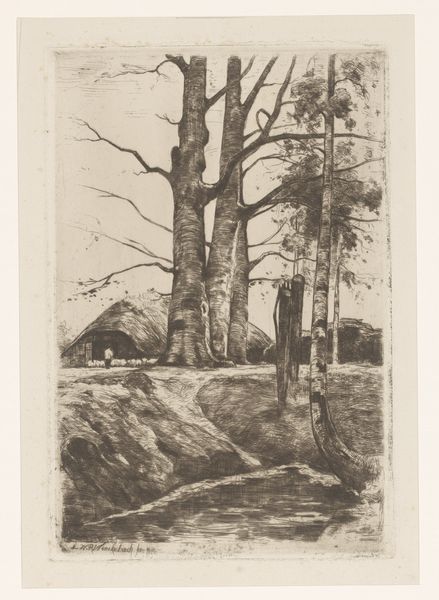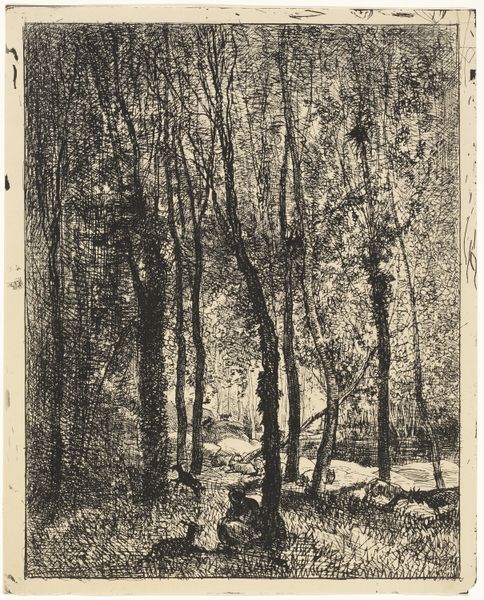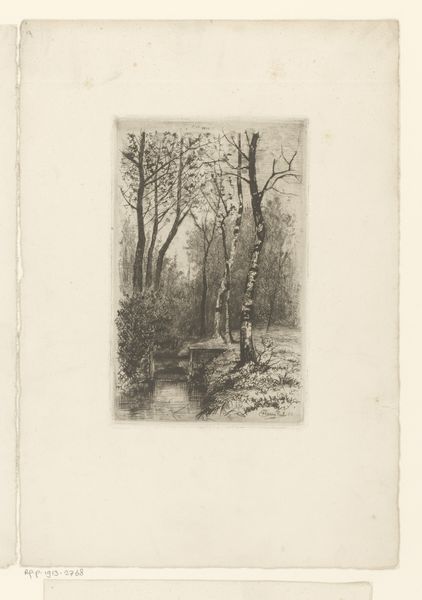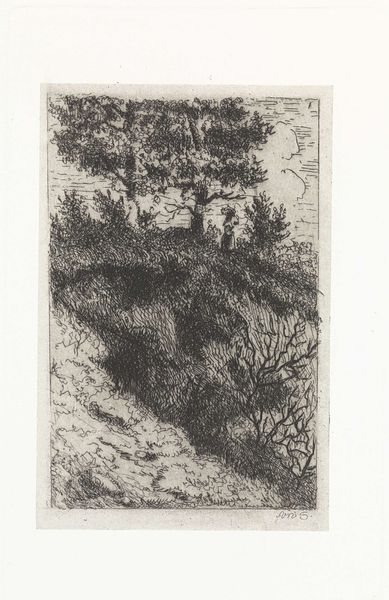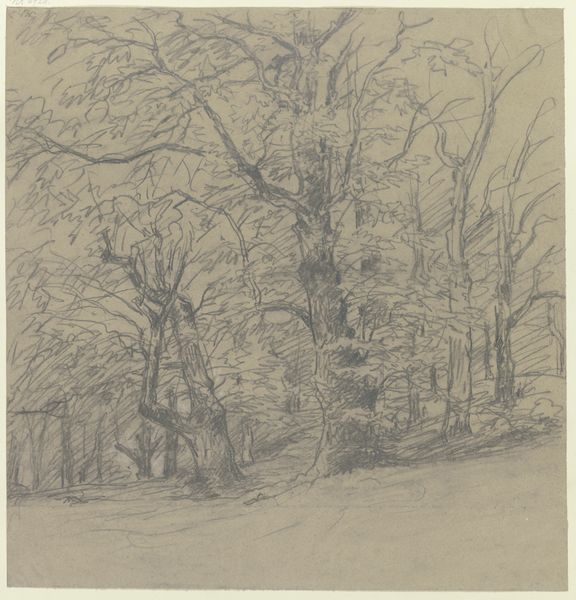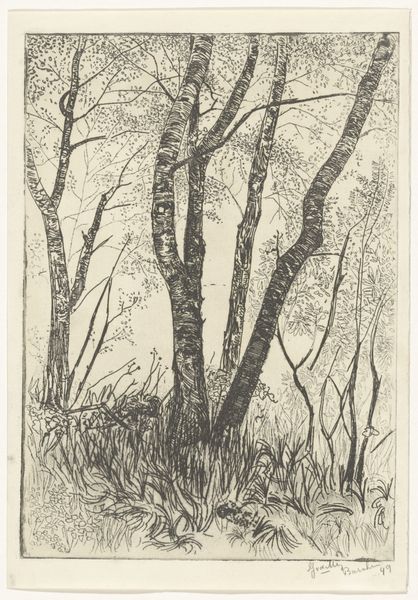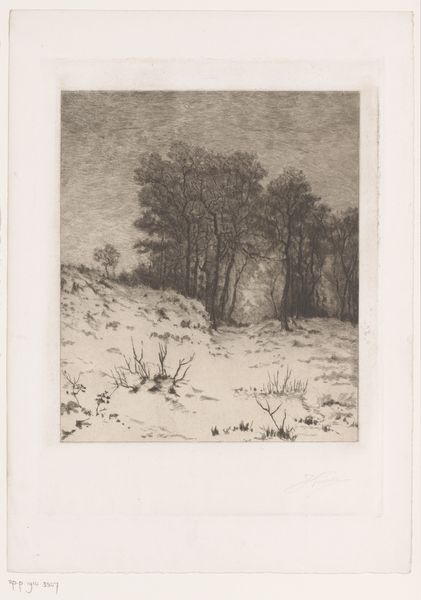
print, etching, graphite
#
dutch-golden-age
# print
#
etching
#
landscape
#
line
#
graphite
#
realism
Dimensions: height 212 mm, width 120 mm
Copyright: Rijks Museum: Open Domain
Curator: Let’s discuss this etching by Anton Mauve titled "Houthakker," which roughly translates to "Woodcutter," dating from sometime between 1848 and 1888. It’s currently housed here at the Rijksmuseum. Editor: It has such an understated quality, doesn't it? Almost melancholic, with its muted tones and bare trees. You feel a stillness within the image; I'm drawn to the delicate lines forming the trees' skeletal branches reaching towards the sky. Curator: Absolutely, and if you consider Mauve’s position in the Hague School, known for its commitment to realism and depicting everyday scenes of Dutch life, the image becomes more compelling. Look at the figure, likely a woodcutter as suggested by the title, diligently working. Editor: He's almost spectral, fading into the trees. The print hints at broader anxieties tied to land and labor during that time period; this isn't a romantic vision of rural life but more of a work study of it. This prompts reflection about who is doing what labour in this space. The fence separating one space from the other almost tells another story on its own. Curator: Precisely, the technique here, the etching itself, involves physically working the metal plate, a kind of labor mirroring the woodcutter’s. This act of artistic labor invites a comparative assessment; it makes us reflect on the varying physical and mental processes of creativity. Consider the tools of both—the woodcutter’s axe and Mauve’s etching needle, instruments that extract value and shape from raw materials. Editor: Right, both axe and needle produce something new, which brings back to the idea of who gets the representation in art; we get access to some workers portrayed but rarely the experiences or life circumstances, the labour itself or those who consumed those things. In an economic ecology of that time, which story does the viewer engage with in this landscape? Curator: Ultimately, Mauve’s work offers us a window into a specific time, encouraging us to consider the labor, materials, and lives that comprise its world. Editor: And challenges us to see past a simple image and understand the layered context of its creation and reception.
Comments
No comments
Be the first to comment and join the conversation on the ultimate creative platform.
